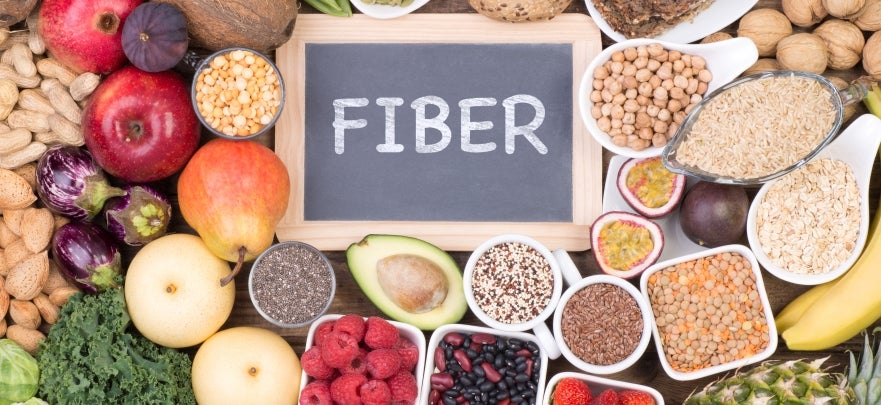Fiber intake, balancing blood sugar
Are you filling up on enough fiber each day? Fiber plays an important role in your overall health, and can also contribute to weight loss because it makes you feel fuller. It promotes good bowel health, lowers the risk of certain cancers and heart disease, and also controls your blood sugar.
The Institute of Medicine recommends that men eat at least 38 grams of fiber per day and women eat 25 grams per day. But Americans average only around 16 grams of fiber per day, half of the recommended amount. Some of the best fiber-rich foods include:
- Oats
- Barley
- Whole-grain breads, cereals, and pastas
- Vegetables
- Fruits
- Brown rice
- Nuts
- Beans
- Peas
- Lentils
So how can you add more fiber to your diet?
-
Eat Whole-Food Carb Sources: While most carbs break down into sugar, fiber stays intact as it passes through your digestive system. Eating fiber along with other carbs helps you feel fuller for longer. Whole-food carb sources all naturally contain fiber. These include fruits, starchy vegetables, legumes and whole grains.
-
Eat Your Veggies First: Nonstarchy vegetables are particularly low in calories and high in nutrients, including fiber. In one study, women given salad before a meal ate 23% more vegetables than those served salad at the meal itself. Eating salad or vegetable soup before a meal has also been linked to eating fewer calories during a meal.
-
Eat Popcorn: You heard that right.. Popcorn is one of the best snacks around, as it’s actually a whole grain, delivering four grams of fiber for every three cups of popped corn. For the healthiest popcorn, air pop it, (and skip the butter!)
-
Snack on Fruits and Vegetables (With a Peel): Fruits and veggies with a peel, such as apples, pears and cucumber and are both easily portable and full of fiber. While all fruit and veggies deliver fiber, some have significantly more than others. For instance, one small pear has five grams of fiber, whereas a cup of watermelon has one gram. Just make sure you eat fruits and vegetables in their whole form, rather than juice, to ensure you get more fiber and less sugar. And keep the peel on…when you peel fruits and vegetables, you often remove half the fiber.
-
Choose Whole Grains over Refined Grains: Whole grains are minimally processed, leaving the whole grain intact. Replace the refined grains in your diet with whole-grain versions, such as swapping pasta and white rice for options like brown rice, quinoa and barley.
-
Read Labels to Choose Foods with Lots of Fiber: Whole plant foods are the ideal way to get fiber. However, if you are going to eat processed foods, you should choose products that are rich in fiber. Read the nutrition label to see how many grams of fiber are in a serving. Over 2.5 grams per serving is considered a good source, and 5 grams or more is excellent.
-
Snack on Nuts and Seeds: Nuts and seeds provide protein, fat and fiber. An ounce of almonds has three grams of fiber. They're also high in unsaturated fats, magnesium and vitamin E. Chia seeds are full of nutrition, providing omega-3 fatty acids, protein, vitamins and minerals, as well as 11 grams of fiber per ounce!
-
Include Legumes in Your Diet: Legumes (i.e.,beans and lentils) are rich in fiber, as well as protein, carbs, vitamins and minerals. Just one cup of cooked beans can deliver up to 75% of your daily fiber needs. You can sneak legumes in your diet by eating hummus and bean dips, adding beans to salads, or even eating dried peas as a snack!
With a little bit of effort you can add fiber to your diet — and improve your overall health while controlling high blood sugar.






